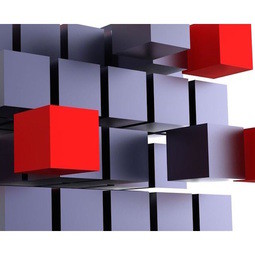
Published on 07/31/2016 | Strategy
I just finished reading the Industrial Internet Consortium’s (IIC) “Industrial Internet Reference Architecture” (or IIRA) document – all 101 pages – and it was much more than I expected. For those interested, IIC is a collaboration of solution providers, academics, and governments focused on meeting the needs of the industrial internet marketplace, particularly as related to the interoperability of components which make up current and future industrial internet systems. IIC is managed by the Object Management Group (OMG).
When I first opened the IIRA document, I was anticipating something akin to the ISA99 reference model or Rockwell’s “Reference Architectures for Manufacturing” – something that a manufacturer could customize and implement within their own enterprise. Instead, IIC has put together an architecture targeting the entire industrial internet of things (IIoT) marketplace – both manufacturers and solution providers. This document establishes a common language and framework which – in their words – “transcend(s) today’s available technologies” to create a shared understanding of how future technologies can interact with the industrial infrastructure. Instead of a Purdue-type model, think conventions, principles and practices for establishing an IIoT framework. Note that you will find models similar to Purdue and a tiered infrastructure within the reference architecture, so mapping between the existing body of knowledge (such as provided by MESA International’s Global Education Program) and the IIRA will not be difficult.
The IIRA is multi-dimensional; it considers the architecture from four different points of view (business, usage, functional, and implementation) across a variety of concerns, including security, business context, automation/control, operations, and information management.
The document itself is clearly the work of many hands. The discussion of industrial internet system resilience has a distinct military influence, while the system composition discussion is definitely academic in nature. There are sections within the document regarding information security that bear the DNA of major players in the networking and IT industry, and discussions on control which come from companies with real-time automation experience. (It’s geeky - I know - but I had fun guessing who wrote what.)

The IIRA is not a specification, nor does it contain a list of applicable standards. Instead, it provides guidance for those designing solutions and establishing standards for the connected enterprise. Most importantly, it provides a common set of principles around which standards, requirements, specifications, and designs may be formed.
Given the nature of the multi-vendor components which typically comprise a plant floor system, it’s important to move beyond the discussion of physical characteristics (i.e. “Is it DIN-mountable?”, “Does it have a RJ45 connection?”, etc.) to the cyber characteristics (“Is the communication secure?”, “Does it support Publish-Subscribe?”, “Where does it reside in a 3-tier architecture?”, etc.) Pre-IIRA, implementers would be responsible for making components from multiple providers – if they needed to collaborate – work together through custom integration. IIRA creates an expectation that custom integration can be minimized or even eliminated by defining integrability, interoperability, and composability.
The Industrial Internet Reference Architecture is not something you’re going to be able to digest in 10 to 15 minutes – it takes a fair commitment of time to read and comprehend (note to IIC – an executive overview PowerPoint might be in order). IIC’s target audience includes component providers, system providers, and system implementers. I think the list should probably be a little broader, so here are my thoughts:
IIoT device OEMs: New devices, from industrial controllers to sensors to servo motors and everything in-between will be expected to collaborate with the larger industrial internet (or intranet for those excessively risk-averse) system.
Industrial Controls Providers: IIRA anticipates a transition from insular controls which currently dominate the market in discrete manufacturing to high-speed distributed controls. This may indicate the need to enhance IEC 61131 or perhaps add IEC 61499 capabilities to existing automation controllers.
System Integrators: While the Purdue model is still valid, IIRA extends it and adds new perspectives – particularly in the area of security where the document stresses the need to include security by design instead of an afterthought.
Manufacturing System Consultants: Consultants need to be able to help guide manufacturers into this new industrial revolution and make the connections between the business perspectives and operations perspectives.
Control Engineers/Manufacturing Engineering Managers: Company executives are going to expect their engineering groups to be up-to-speed on the changing technology, and to interact with the marketplace to implement effective solutions.
IT analysts and managers: The convergence of information technology and operations technology that must take place for effect Industrial Internet Systems will require collaboration between the controls engineer on the plant floor and IT personnel. A shared understanding of the IIRA will help facilitate that collaboration.
The IIRA is – in my opinion – a much-needed addition to the overall body of knowledge in manufacturing operations management. It will be a great help as principles and practices are developed around smart manufacturing concepts. I do hope though that there is enough interaction between groups such as MESA, SMLC, OMG/IIC, ISA, ISO and others to ensure a long-term consistent perspective is maintained.